
South Pacific Pounded by Earthquakes and a Cyclone
The South Pacific has been a hive of natural activity recently, with multiple earthquakes and a Category 5 cyclone keeping island nations on alert for damaging winds, rains and tsunamis.
The earthquakes occurred along the Kermadec Fault, which runs to the east of New Zealand and continues north to the Kermadec Islands, approximately 500-620 miles northeast of New Zealand’s North Island. According to Earthsky.org, two earthquakes registering 7.3 and 7.4 occurred off the coast of Gisborne, New Zealand, resulting in a warning for people to move quickly to higher ground. A third and larger quake, with a magnitude of 8.1, occurred within eight hours of the first two and prompted additional tsunami warnings for several Pacific localities, including Hawaii. But according to Volcanodiscovery.com, the region experienced a magnitude 5.6 earthquake just four days later.
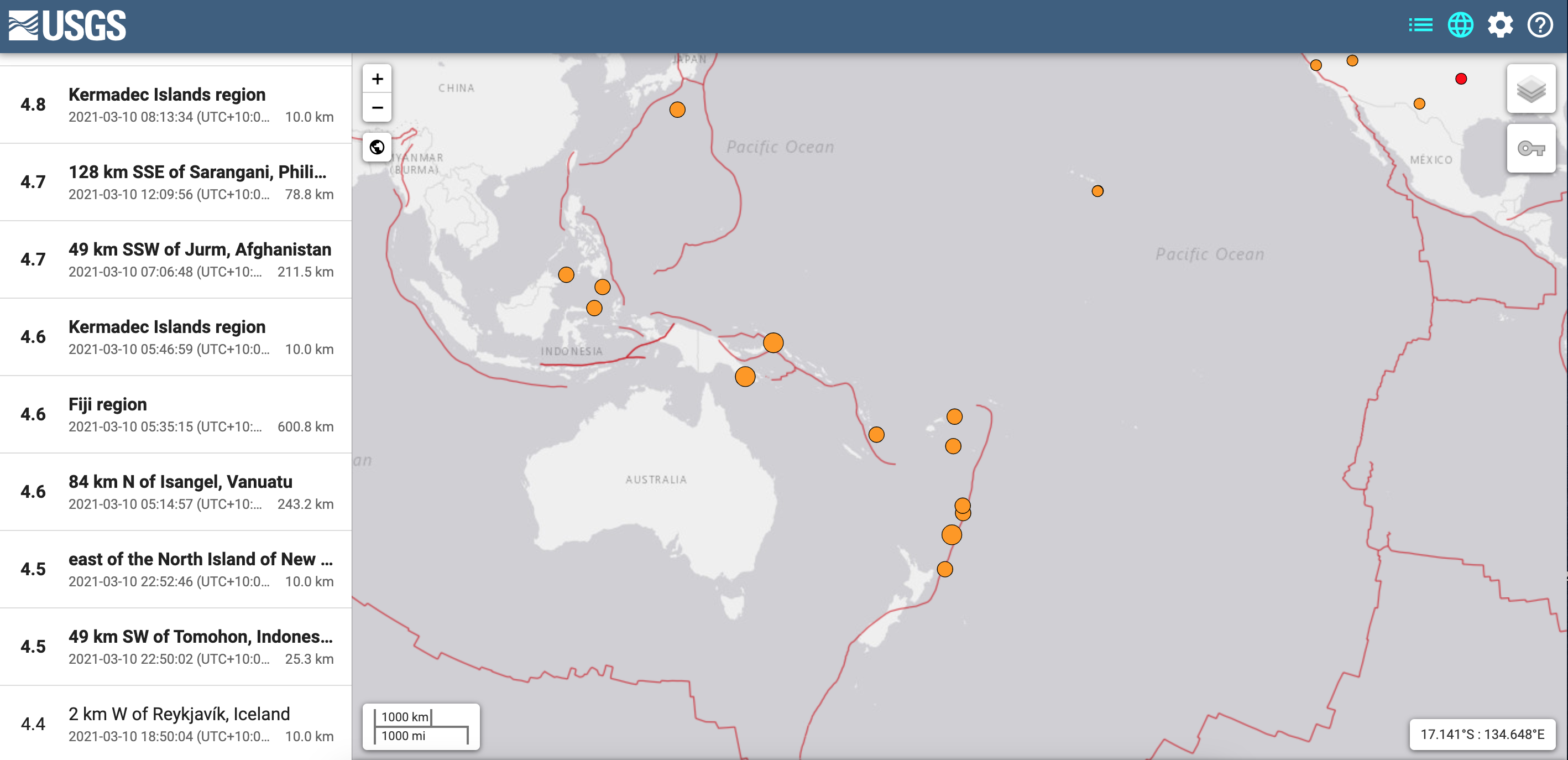
And as for the cyclone — or hurricane in our local language — Cyclone Niran impacted New Caledonia on the morning of March 7. The New Zealand Herald reported winds of up to 220km (136 miles) per hour. We received a note from Bay Area sailor Andy Kurtz (currently in Fiji), who told us there were gusts of up to 110 knots in the harbor in Noumea and that “lots of boats sank ….
“My friend was on her boat in Noumea; fortunately she and her boat survived.”
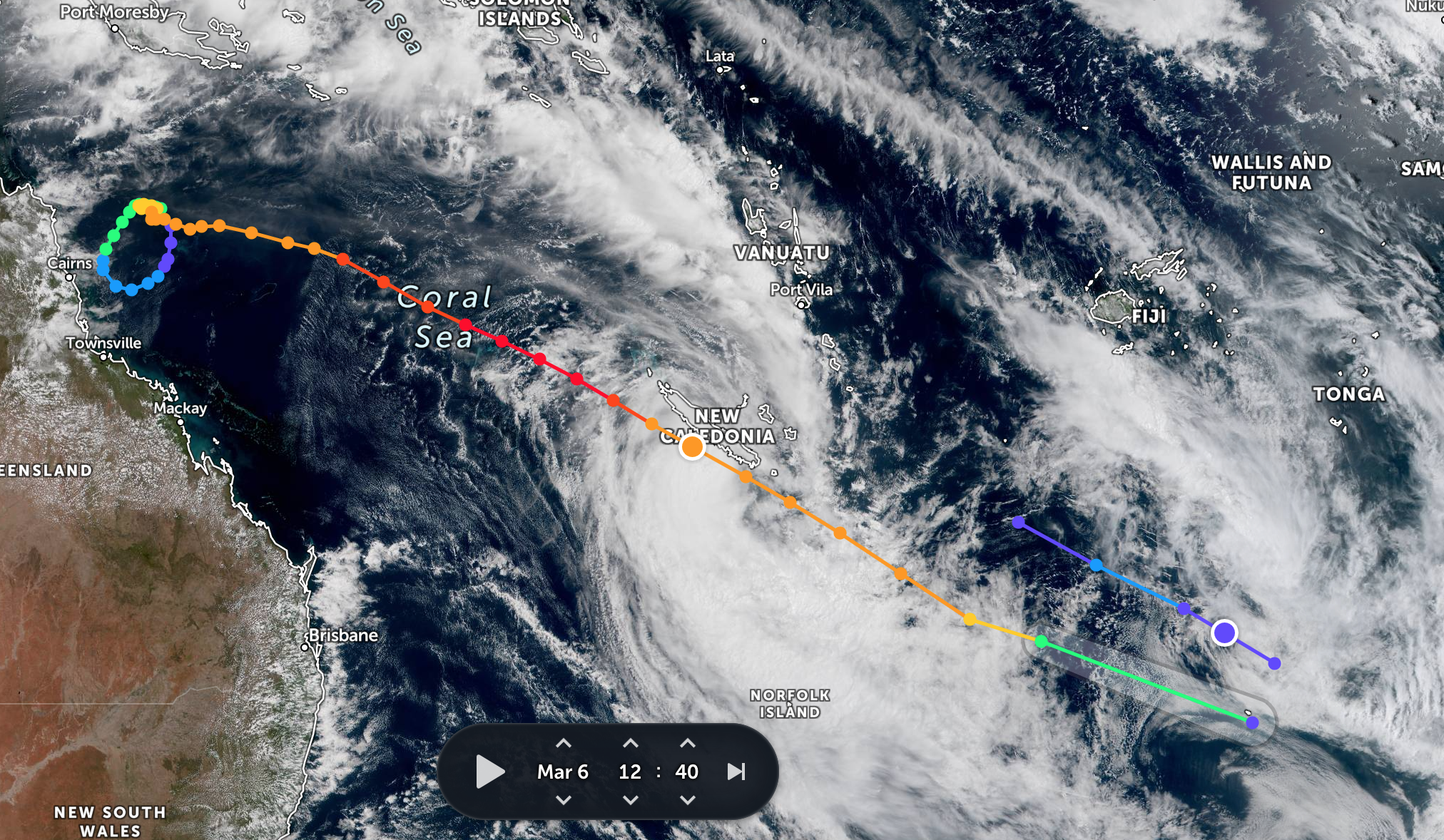
The Herald reported that several ships had been forced aground on the coast, but that apart from widespread power outages and roofs being torn off, “no major damage was recorded following the cyclone, the intensity of which was a little lower than expected.” AccuWeather reported Niran as being equivalent to a Category 4 hurricane on the Saffir-Simpson Hurricane Wind Scale.
From all reports it sounds as if the South Pacific has been having a rough time lately, and we urge all cruisers to be on alert and keep up to date with current weather reports. Stay safe out there!
March Caption Contest(!)
Hopefully this will never happen to any of us, but clearly it happened to someone. Have fun with your March Caption Contest(!).
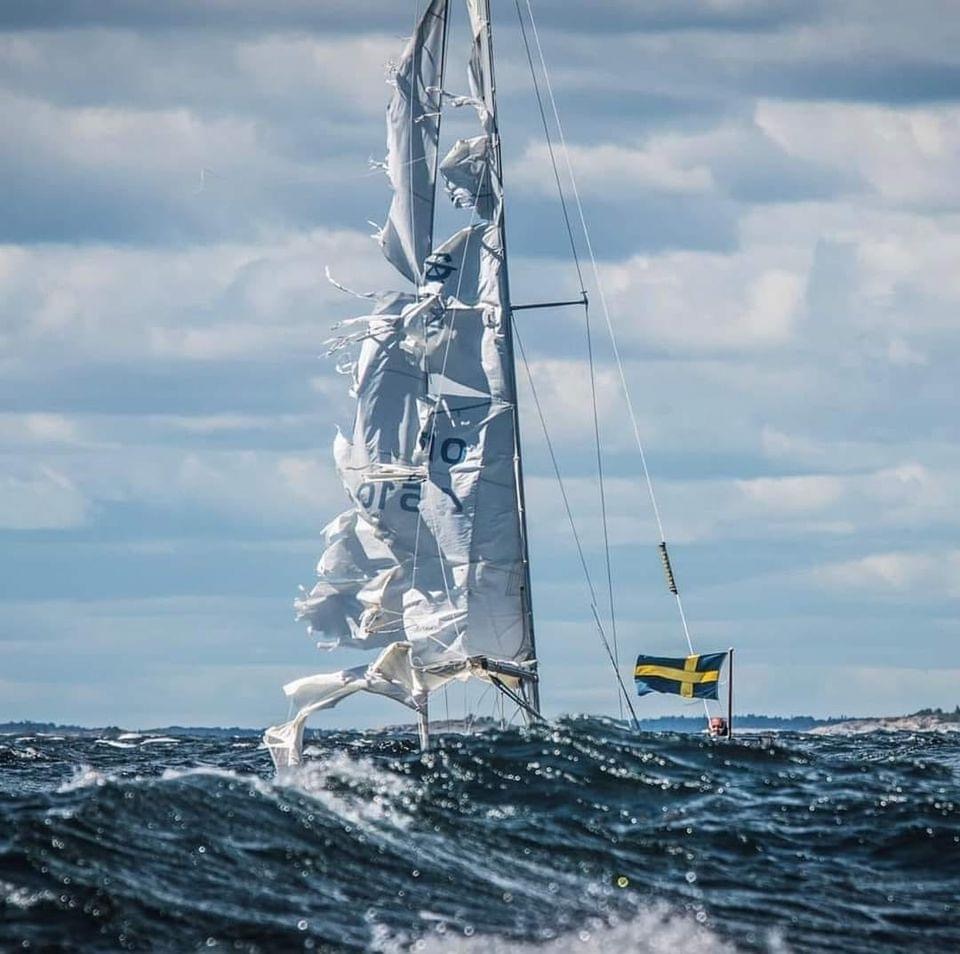
Have you remembered to check out February’s Caption Contest(!) winner in this month’s magazine?
Enjoy Downwind Sailing with Walder Boom Brake
The innovative Walder boom brake — active safety at sea www.boom-brake-walder.com
Solo Skipper Overboard in SSS Three Bridge Fiasco
Our race report on January 30’s singlehanded-only Three Bridge Fiasco appeared in the March issue of Latitude 38. But there’s more to the story. In the late afternoon, around 5 p.m., as three boats were in the vicinity of Blackaller Buoy east of the Golden Gate Bridge’s South Tower, one of the solo skippers fell overboard. The parties involved told this story to the Singlehanded Sailing Society’s virtual meeting on February 24.
Over the Side — and Back on Board
“Basically I lost my balance,” reported James Fair, who sails the Merit 25 Chesapeake. “I tried to sit down and ended up rolling right overboard. I had a harness on, so I was dragging along the side of the boat.” Jim asked himself, “Now what do I do?” He was trying to figure out how he was going to get back onto the boat.
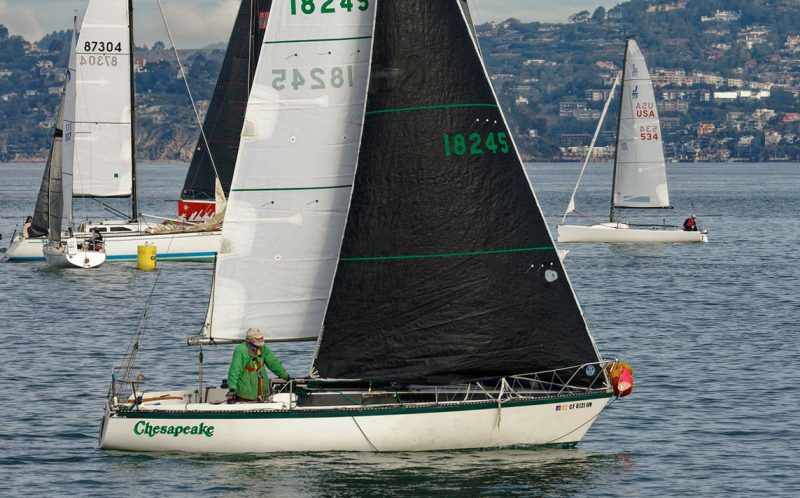
Fortunately for Jim, Donn Guay on the Newport 30 MkII Zeehond and Phil Strause on the Santa Cruz 27 Wolpertinger weren’t too far away. “Donn said he heard the splash,” said Jim. “I’d like to publicly thank Donn on Zeehond and Phil on Wolpertinger for fishing me out of the drink.”
Donn told Jim, “I have a ladder on the back of my boat. Want to use it?”
“Absolutely,” Jim answered. Zeehond pulled alongside Chesapeake. “I unclipped, swam over to the ladder, and with help from Donn I got up the ladder. Then he maneuvered close to Chesapeake. I got back on and continued the race.”
Phil Strause was circling on his SC27. “I was right there. I looked back and saw Donn on Zeehond making an abrupt maneuver, going out of the direction that he was normally going to be sailing in. That caused me to focus on him and say, ‘Why is he going the odd direction?’ I went back that direction and immediately hailed the race committee and said, ‘I’m turning around; I’m going to turn the motor on.’
“The fact that Donn had the swim ladder was really amazing. By the time I got back there, Jim was aboard and working his way onto his own boat.”
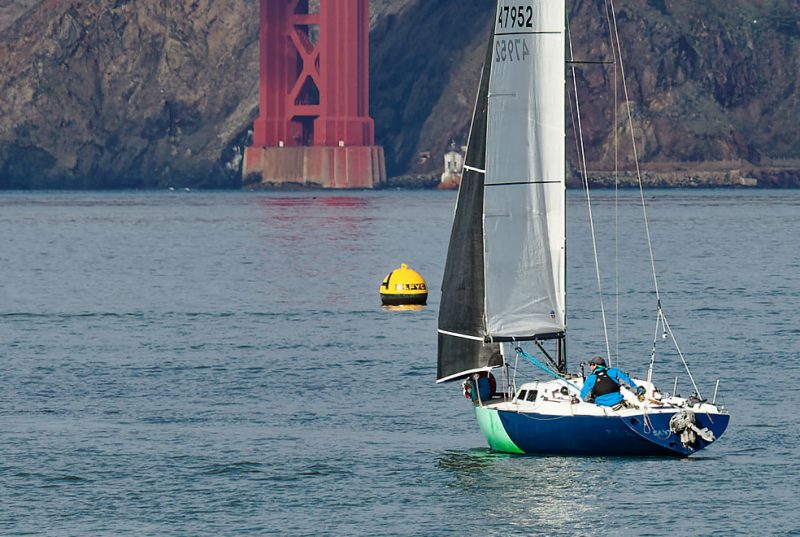
“I was thinking about taking the ladder off to save weight,” admits Donn Guay. “I think my wife talked me out of it a couple of times.
“When I heard the splash I asked the first stupid question, ‘Can you get out? Can you get back up?’ And I saw the answer immediately. He didn’t have to say no. I told him I’d come back. I was doing doughnuts with the spinnaker up.” Donn didn’t take the time to douse the kite, but the breeze was just 5 knots, barely enough to keep the spinnaker full, and the sea state was flat.
“His body was acting like a sea anchor on his boat, so my boat went ahead of his,” continues Donn, telling the story in more detail. “I took the autopilot off, started the motor, and spun around. The first time I came by in the opposite direction his boat was going, and I told him the plan: I was going to go and put the ladder down. Then I spun around and came back to pick him up.”
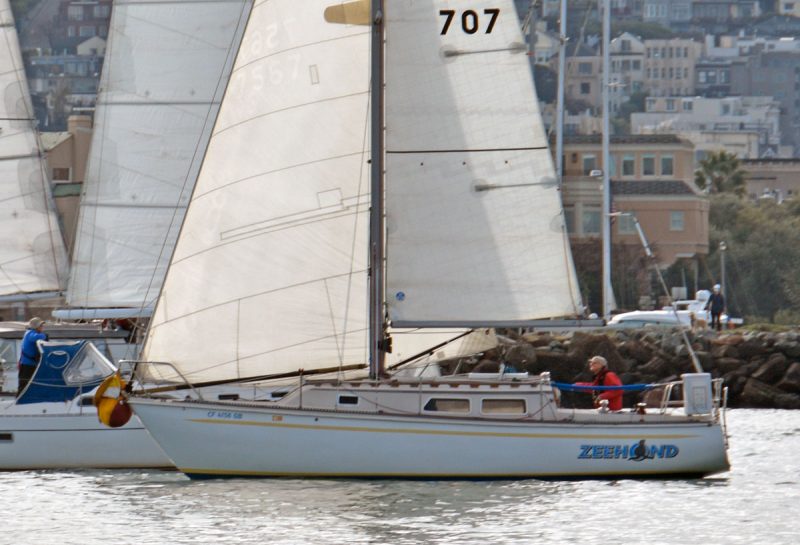
“I saw that he was attached to the boat,” said Donn, “and I thought he wasn’t ready to let go, so I might’ve come around a third time, not sure. This is like your TV on fast-forward. You’re doing a singlehanded race and you’ve got all this stuff going on, and all of a sudden you have to pick someone out of the water. You can’t remember everything you saw when you fast-forward a commercial.
“He did clip off and floated alongside the boat. I kept the boats going the same direction because the current was going out, and when he clipped off the current carried him back. Even if he couldn’t swim too well it would have carried him to the back of my boat. When he got to the back, I asked if he had the ladder, and a couple of seconds later I asked if he was on the ladder. He said he was trying. I ran to the back of the boat and I leaned way down as far as I could with my right hand. ‘Give me your hand,’ I said. We did a forearm-to-forearm grip. I really don’t have that much upper-body strength, but I did at that moment, so there was some adrenaline going.
“He got onto the ladder and said, ‘I’m on the ladder,’ so I could go back and steer, because the autopilot wasn’t on. The spinnaker’s up, the main’s all the way out, the pole is all the way back.” By then the spinnaker was wrapped a little around the forestay. “Him hanging off the back of my boat acted like a sea anchor, so I didn’t catch up to his boat while he was getting up on my boat. Even before he got all the way up the ladder I felt sorry for him because there’s a pretty good obstacle course on my boat. Cascading backstay adjuster, autopilot.
“I said, ‘We’re coming up to your boat; get to the right side of my boat.’ I must have said it about three times. I didn’t even look at him — I was steering; trying to get close to his boat. He managed to get over there just in time. The two boats bumped, and he stepped across. I have a small rub rail scar about 2 inches long. I was concerned that maybe he had a little more damage. My pole pushed the back of his main. As I was separating from him, I asked if he had dry clothes. He said he did. I pulled away, the spinnaker wasn’t too hard to sort out, and I finished with the kite up.”
Blackaller Buoy was the last rounding mark before for the three boats, and the finish line was not far down the San Francisco shoreline in front of Golden Gate Yacht Club.
“I really appreciated that both Donn and Phil alerted the race committee of the event as it was unfolding and after it was resolved,” said Tom Boussie, race chair for the SSS. “Absolutely, please loop the race committee in and we can coordinate additional assets like the Coast Guard, the police, etc., as needed if the situation escalates beyond what you’re able to handle on the water. Both racers got time credit. I don’t want anyone to hesitate to come to the aid of one of their fellow sailors in distress.”
Skipper Overboard Tips
Jim circumnavigated the globe aboard his Outbound 46, also named Chesapeake. He completed a Singlehanded Transpacific Race on each of the Chesapeakes. “I’ve got 100,000 miles under my belt,” he said. “If you go out there and you do this stuff long enough, you will fall overboard, guaranteed. If you’re singlehanding especially, make sure you’ve got a harness on and are using it all the time. Make sure you have a way of getting back on the boat. I didn’t. I now do. I’m not so sure I could have gotten back on the boat. If you think you’re strong enough to do a pull-up, try doing a pull-up with a 25-lb bag of concrete tied to each leg. That’s how much you weigh when you’re in the water. You’re not going to muscle yourself back on board.”
From Donn: “I think it’s important to bring a full set of dry clothes, and I had them.
“For the boats with stern pulpits: Last summer in the Delta, after reading an article, I took the top off my stern pulpit and made a boarding gate back there. Since I didn’t have an intermediate horizontal member, I made one out of heavy-duty bimini stock and fittings. That helped immensely going swimming in the Delta and getting out of the water. I didn’t have to dive through my stern pulpit to give Jim a hand. My back didn’t hit the top of the stern pulpit. So I got a lot higher pull than I would have.
“My stern ladder was tied up with a shoestring with a bowtie in it. On one of the ends of the shoestring, I’ve included a trip line that goes down to the waterline. So if I go in the water, I can pull the tripline and untie the shoestring. There’s a second line that trails at the waterline now too that will pull the ladder down if I can’t reach the bottom step.
“Any time I got close to Jim, I put the motor (an inboard diesel) in neutral. But he was breathing fumes from the stern exhaust.”
From Phil: “I have a longer halyard that we have set up specifically so that if we needed to we could try to bring somebody out of the water. But I used to work at OCSC Sailing. I was an in-the-water training person, and I can tell you that it was incredibly difficult, not moving, in the marina, to get back up with the halyard.
“Your ability to get back on your own boat in those situations is incredibly important, and something I’m thinking of now too. It’s not an easy thing to do if you’re alone. Thank God Donn had that ladder.
“It doesn’t matter what’s happening; turn around and make your way back to help where you can.”

We Have a Match! Italians vs. Kiwis
We made it past that ‘magic’ moment of the first race of the America’s Cup, though it was a bit ‘tragic’ momentarily for Luna Rossa Prada Pirelli, especially for co-helmsman Jimmy Spithill. He hung himself out to dry after failing to draw a penalty on a failed luff attempt early on, really early on!
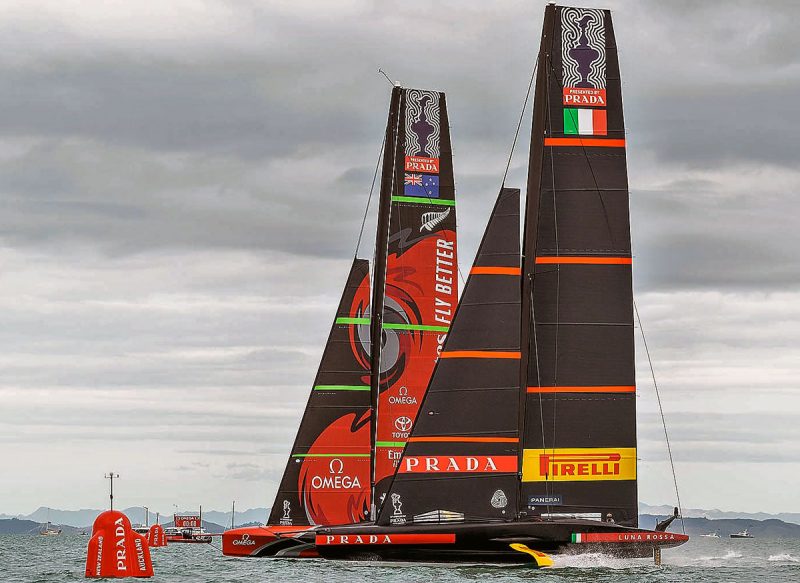
Spithill and team did capture Race 2, leaving Day 1 as a draw — great for all of us watching. We have a Match!
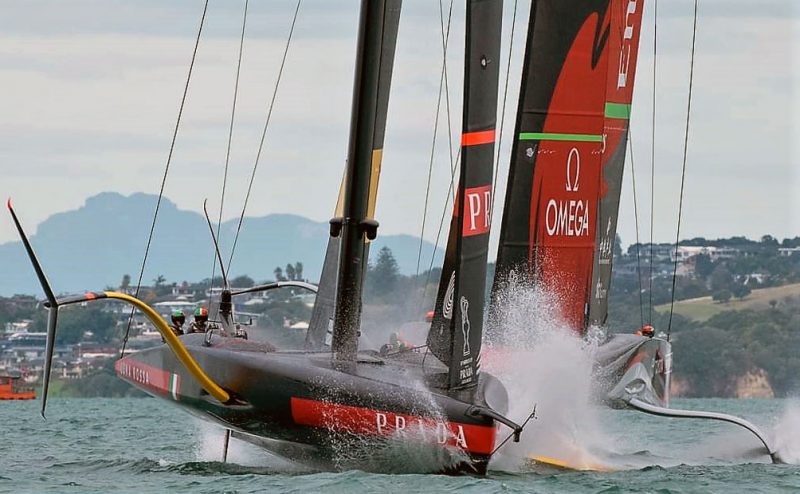
America’s Cup 36 Day 1
On a dramatic first day, both teams made a few mistakes, be it nerves, rust or just getting caught up in the immensity of defending or capturing yachting’s holy grail. Clearly the debriefs are going to be quite intense and thorough as both the Kiwis and the Italians dissect every second on the racecourse, recognizing that both boats are pretty evenly matched right now.
With COVID Level 2 protocols still in place, the races were staged on Racecourse E, between the coast and the island of Waiheke, which is not quite as fan-friendly as the inner-harbor courses. That did not deter a robust spectator fleet, as Kiwis turned out in droves.
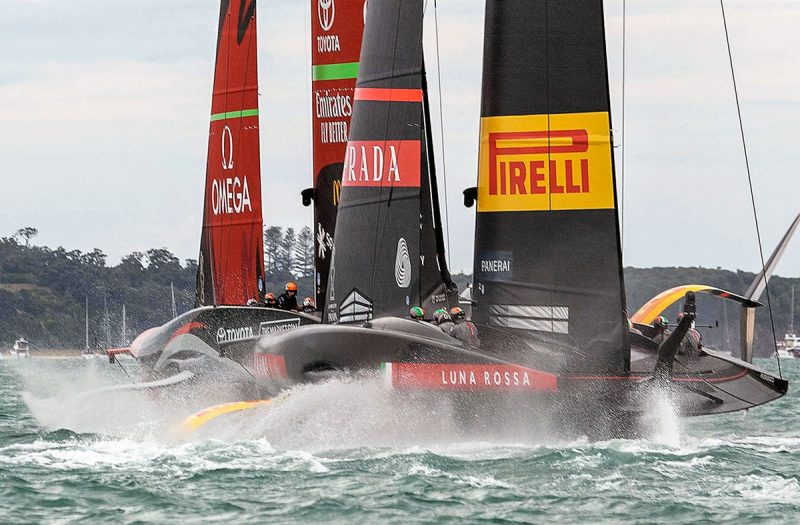
“It’s been an interesting and important day,” said Max Sirena, skipper and team director for Luna Rossa Prada Pirelli. “There was a lot of expectation on the part of both teams to understand the performance of the two boats. For us it was really interesting, because we raced in a wind range that is definitely more favorable for their boat and their configuration.
“We have definitely made several mistakes, like the start of the first race. And in the second race at the last downwind gate we opened a door for ETNZ, which was a mistake that could have cost us a lot. We need to analyze what we did well and our mistakes. But obviously the day is positive. To be back on shore, tied in a wind range of 13-18 knots, where they certainly felt more confident, gives us a lot of energy. If we race well, we can do something special.”
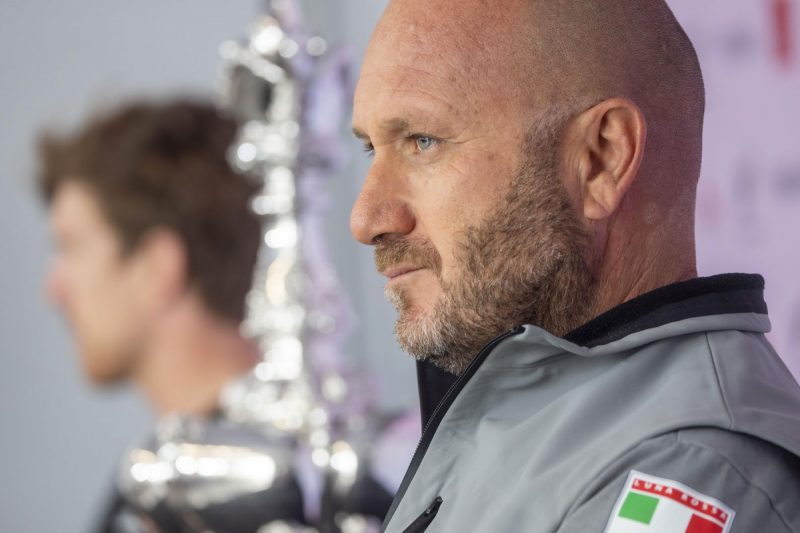
Race 1
It was a tentative start for both teams. The Kiwis entered on port, as they chose to sail deep then lead out to the boundary. The Italians followed, engaging them briefly below the line.
New Zealand started strong to windward at speed and on time, quickly gaining a lead and forcing the Italians into the unenviable option of either holding onto the leeward position and measuring their speed against what has been touted as an incredibly fast boat, or throwing in a high-risk maneuver by going for a penalty.
Spithill, being Spithill, luffed hard, trying for the protest, and failed, slowing and allowing New Zealand to ease ahead and into a controlling position for the race, which they maintained until the finish, winning by just 31 seconds.
But the Italians did not go away. Being able to stay with the Kiwis on the racecourse heartened them and gave them a little momentum going into the second race.
“We were really happy with the pre-start and how the team has the boat in good shape,” said ETNZ helmsman Peter Burling. “We should have probably hit them harder on the second beat. It’s been three months or so since we last raced. It’s great to compete against another boat rather than our chase boat.”
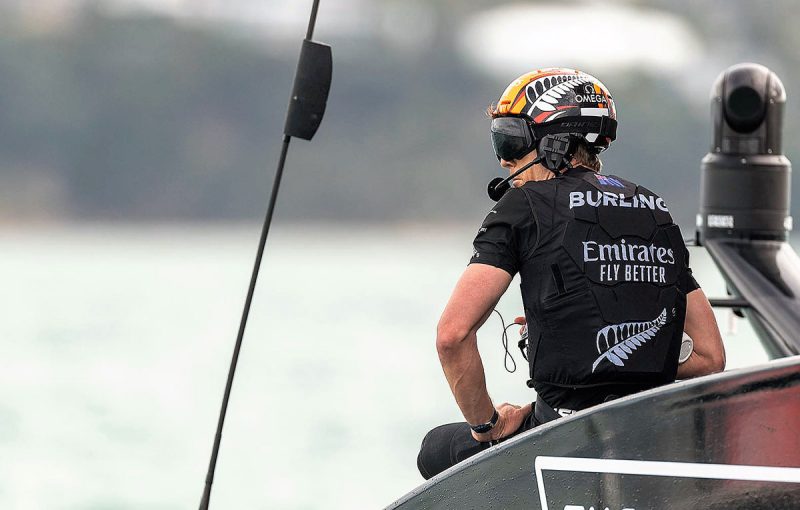
Race 2
In the second race, both teams changed down to smaller jibs for the increasingly shifty and gusty conditions. They were keen to reset and get into the second race of the day. The Italians entered on port this time and headed out to the boundary to jibe back to the line. The Kiwi boat Te Retuhai languished briefly, coming off her foils, and stayed high before tacking back in late, allowing Luna Rossa the lead to the line.
The Italians were able to control New Zealand up the leg, keeping it tight, and headed into the first gate extending to a small, but comfortable lead. The radical-looking Te Retuhai was able to get out of phase with the covering Italians and made some gains, closing the gap at the end to just 7 seconds.
“We didn’t get the best start, not quite doing the best job of the roundup, and ending up skidding sideways and falling into them, which was a shame. We looked a bit rusty there,” said Burling. “What was really good was to be able to get back into them on that last beat. It is no secret we haven’t raced for a while. It was great to get the first win, but one mistake and life is pretty hard for the rest of the race.
“There is plenty to debrief. We know the team that wins the last race wins the event, so we are happy to get a win on the board and move on to the weekend,” continued Burling. “It felt like the boats were pretty even today, but we are happy we have a tool to win this.”
“We just kept the boat going well. It was a good sign of strength to bounce back after that first race,” said Spithill. “I think it was one of those racetracks where the lead boat had the advantage, picking the time to tack or jibe. It is great to be competitive!”
“The fact that we have seen that by racing well we can beat them is good news for us and gives us even more confidence,” said Sirena.
Day 2
The event takes a lay day until racing resumes tomorrow, Thursday, March 11, at 7 p.m. PST. It is the only break the teams will get unless Mother Nature intervenes.
So, we go into Race Day 2 tied, a rarity in the 36 matches for the Cup. We’ll see whether Luna Rossa can maintain their newfound momentum. New Zealand will endeavor to make sure that “rust never sleeps.”
Last Days for Latitude 38’s SIP Subscriptions
Can Cargo Once Again Cross the Oceans Under Sail?
Humans are creative, and sailors are amongst the most creative humans on the planet. The sailing world is filled with inveterate tinkerers, and it continues to include those sailors who want to incorporate sailing technology to help the world reverse the course of climate change.
Below are two ships under development to help change the course of the shipping industry. The first design shown below already has cargo commitments from Michelin, which has agreed to ship tires aboard these ships currently under development by Neoline of France. Increasingly, companies like Michelin are making serious commitments to eliminate their carbon footprint, and other companies are stepping in to help. To read more go to GCaptain here.
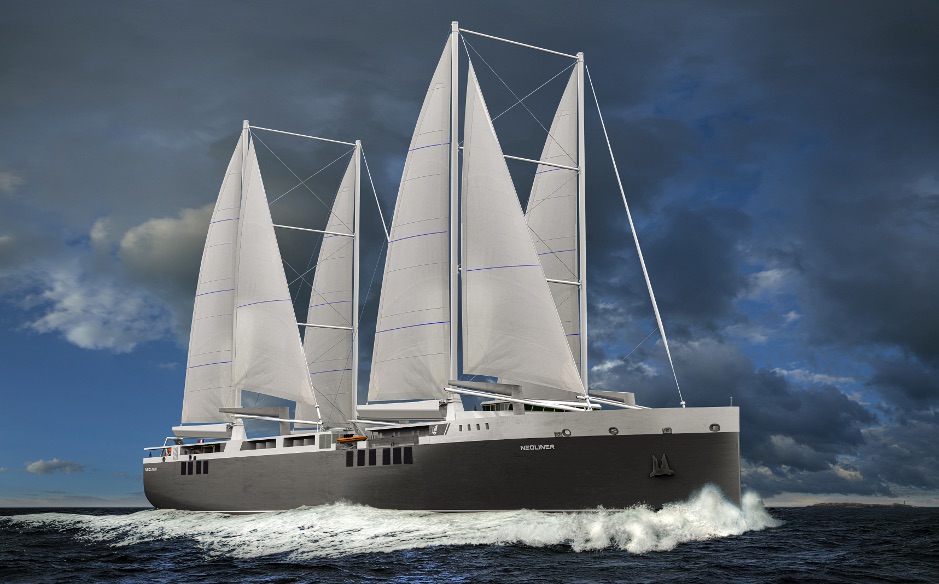
The British company, Windship Technology, has introduced the triple-wing design below to help eliminate CO2 emissions from the shipping industry. We know shipping won’t stop, but emissions can, over time, be dramatically reduced. You can read more about the Windship Technology project at Ocean Economy News.
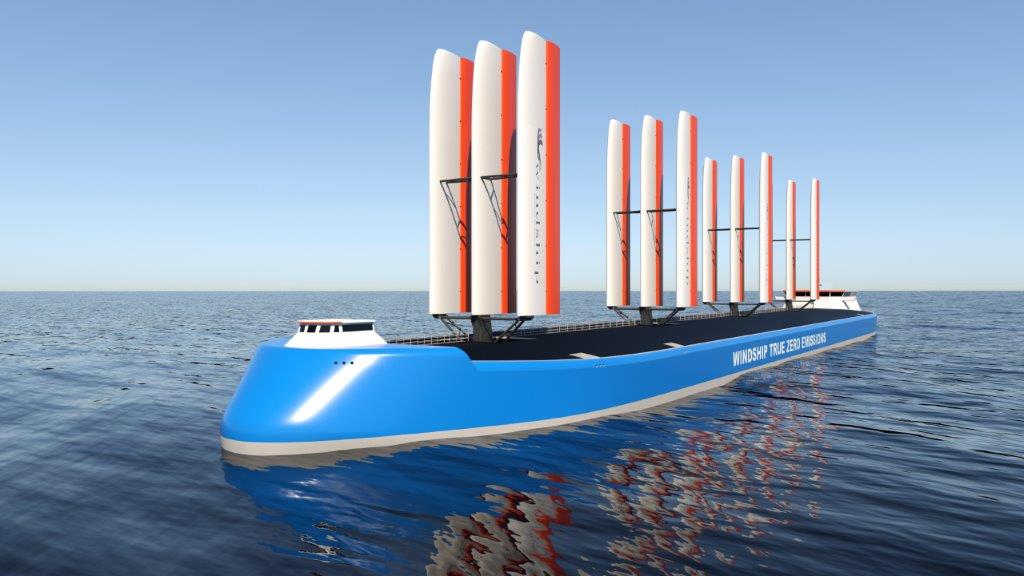
Sailing has always been a low-carbon way to live, and is ultimately an activity that focuses people on working with nature rather than against it. These new designs both look like interesting steps in the right direction.

